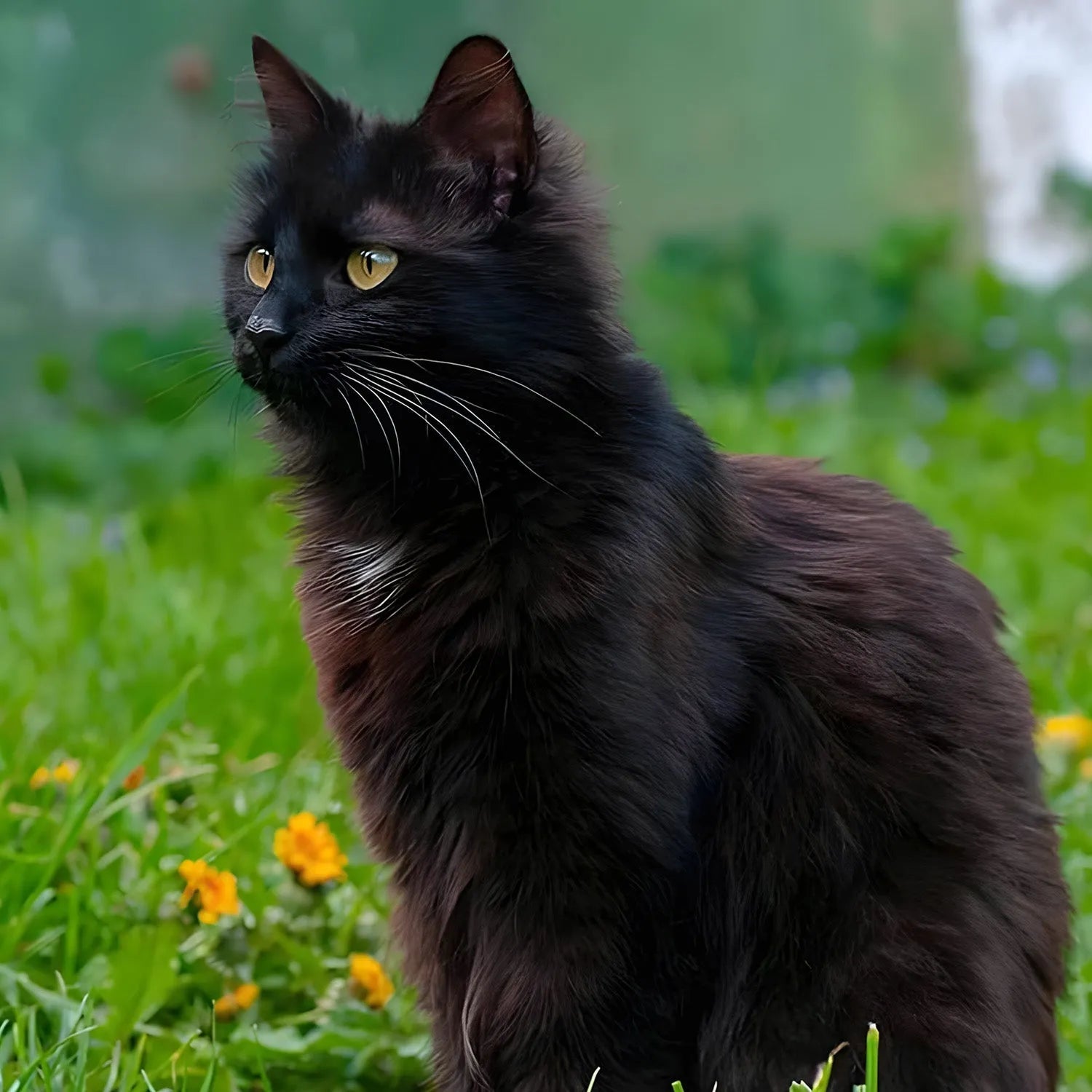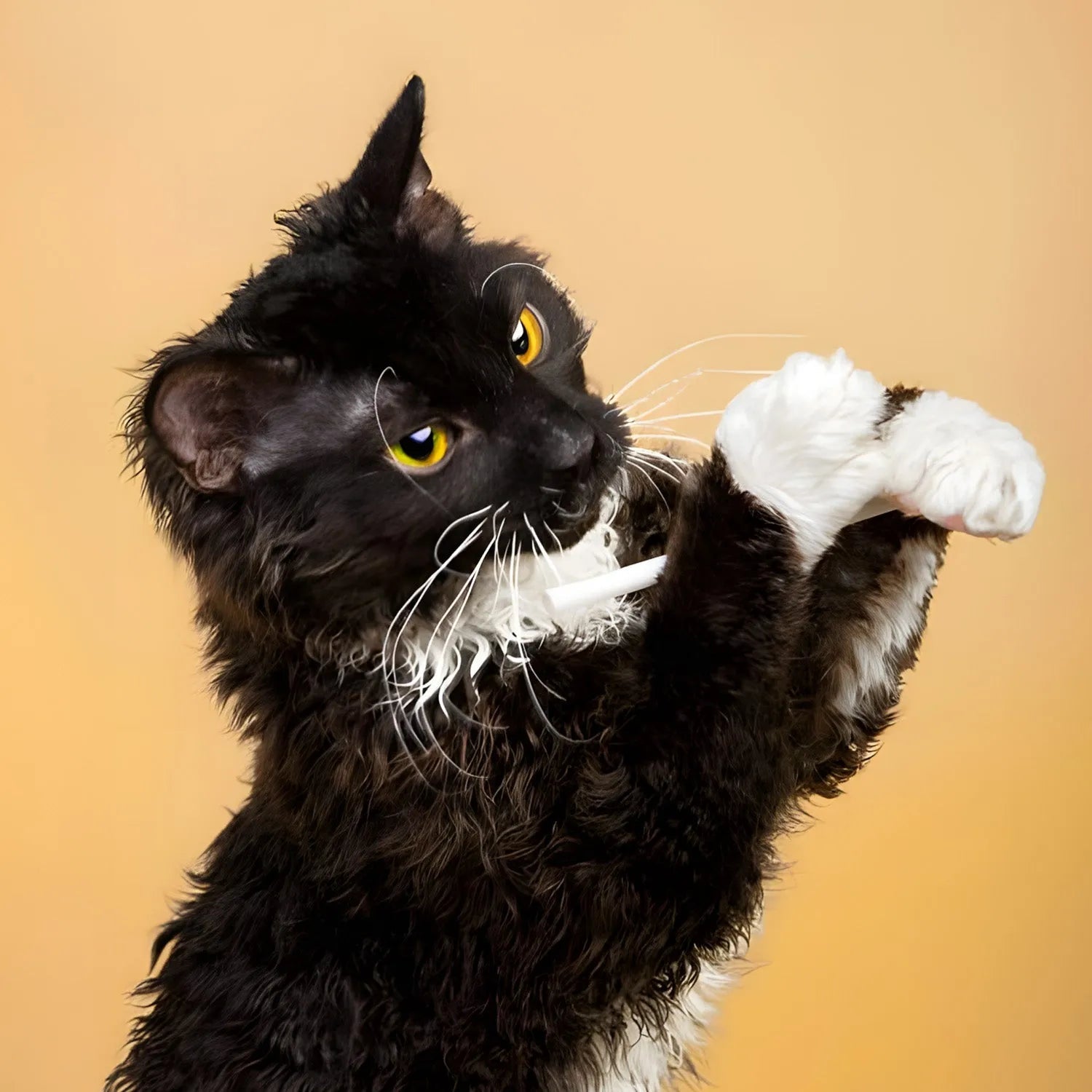Suphalak: The Rare Jewel of Thailand
Introduction
The Suphalak cat is one of the rarest and most revered feline breeds in the world, originating from Thailand and sometimes called the "copper cat" because of its rich, reddish-brown coat. Considered a symbol of wealth and good fortune in Thai culture, the Suphalak has been highly prized for centuries. In addition to their striking appearance, Suphalak cats are known for their affectionate, lively personalities, making them wonderful companions for those lucky enough to own one. In this blog, we’ll explore the Suphalak cat’s lifestyle, behavior, grooming needs, and how it interacts with humans and other pets.
Ratings (1-5)
-
Environmental Adaptability: 4
-
Food Consumption: 3
-
Need for Companionship: 5
-
Trainability: 4
-
Tolerance of Children: 5
-
Ease of Domestication: 5
History and Origins
The Suphalak is an ancient breed that originated in Thailand, where it is considered a rare and auspicious cat. Historical records of the Suphalak date back to the 14th century, where they were mentioned in the **Tamra Maew**, or Cat Book Poems, a series of manuscripts that describe several of Thailand’s native cat breeds. The Suphalak was considered a symbol of wealth and good fortune, and owning one was thought to bring prosperity and happiness to the household.
Despite their ancient roots, the Suphalak remains extremely rare today, even in their native Thailand. This scarcity has only added to the breed's mystique, making them highly sought-after by collectors and cat enthusiasts around the world.
Physical Characteristics and Colors
The most distinguishing feature of the Suphalak cat is its rich, copper-colored coat, which is unique among cat breeds. The coat is short, sleek, and shiny, with a texture that is soft and smooth to the touch. Suphalak cats have a solid color throughout, with no tabby markings or shading, which enhances the depth and intensity of their copper coat.
Suphalak cats are medium-sized, with a graceful, muscular build that reflects their active and agile nature. Their heads are wedge-shaped, with large, almond-shaped eyes that are usually golden or green. Their ears are medium to large and sit high on their heads, giving them an alert and inquisitive expression.
Common coat characteristics of the Suphalak:
-
Copper or Reddish-Brown: The hallmark of the breed, with a solid, deep copper hue that covers the entire body.
-
Golden or Green Eyes: Bright, expressive eyes that contrast beautifully with their dark coats.
Lifestyle and Behavior
Suphalak cats are known for their playful, energetic, and affectionate nature. They are highly social animals that thrive on interaction with their human family members, making them wonderful companions. Suphalak cats are curious and active, often engaging in playful antics around the house. They love to explore their environment, climb, and play with interactive toys that challenge their intelligence.
Despite their active personalities, Suphalak cats are also highly affectionate. They form strong bonds with their owners and enjoy spending time with their human companions. Suphalak cats will often follow their owners from room to room, eager to be involved in whatever is happening. They are also known for being gentle and tolerant, making them great pets for families with children or other pets.
Suphalak cats are not particularly vocal, but they will communicate with soft meows or chirps when they want attention or affection. They are intelligent cats that enjoy problem-solving toys and activities that stimulate their minds, so it’s important to provide them with plenty of mental and physical stimulation.
Trainability and Intelligence
Suphalak cats are highly intelligent and can be trained to follow basic commands, perform tricks, and even walk on a leash. They respond well to positive reinforcement techniques, such as treats and praise, and they enjoy learning new things. Suphalak cats are quick learners, and they will often pick up new behaviors through observation and interaction with their human companions.
Their intelligence also means they can become bored if not provided with enough stimulation, so it’s important to keep them mentally and physically active to prevent boredom-related behaviors.
Social Behavior and Human Interaction
Suphalak cats are social and affectionate animals that thrive on human interaction. They form strong bonds with their owners and are known for their loyalty and devotion. Suphalak cats love being close to their human companions, whether it’s sitting on a lap, following them around the house, or snuggling up for a nap.
These cats are not as vocal as some other breeds, but they will communicate with soft, gentle sounds when they want attention or affection. Suphalak cats enjoy being part of family activities and are happiest when they can be involved in daily life. They are also known for their gentle and tolerant nature, making them ideal companions for families with children or elderly individuals.
Because of their social nature, Suphalak cats do not like being left alone for long periods. They thrive in homes where someone is around for most of the day or where they have another pet to keep them company.
Compatibility with Children and Other Pets
Suphalak cats are excellent companions for children due to their playful and tolerant nature. They enjoy interactive play and are generally patient with children’s antics, provided they are treated with respect. Their gentle demeanor makes them a safe choice for families with young kids, as they are less likely to become overstimulated or aggressive.
In addition to being good with children, Suphalak cats also tend to get along well with other pets, including dogs. Their confident and friendly nature allows them to integrate well into multi-pet households, and they often enjoy the company of other animals. Proper introductions are important, but Suphalak cats are generally accepting of new furry family members and are known for their ability to get along with both cats and dogs.
Grooming and Care
The grooming needs of a Suphalak cat are minimal due to their short, sleek coat. Weekly brushing is usually sufficient to remove loose hairs and keep their coat looking shiny and healthy. Their fur does not mat or tangle easily, so they are relatively low-maintenance when it comes to grooming.
In addition to regular brushing, Suphalak cats require routine dental care, ear cleaning, and nail trimming to maintain their overall health. Their grooming needs are generally low, making them ideal for owners who want a cat that is easy to care for.
Health and Lifespan
Suphalak cats are generally healthy, with no major breed-specific health concerns. Because they are a naturally occurring breed, they benefit from a diverse gene pool, which helps reduce the risk of genetic health issues. However, like all cats, they can be prone to common feline conditions such as dental issues or obesity if not properly cared for.
Regular veterinary check-ups, a balanced diet, and maintaining a healthy weight are essential to keeping your Suphalak in good health. With proper care, Suphalak cats typically live 12-15 years or more, making them long-term companions for any household.
Environmental Adaptability
Suphalak cats are adaptable and can thrive in various living environments, whether in a small apartment or a larger home. They are particularly well-suited to indoor living, where they can enjoy a calm and predictable routine. Because of their active and curious nature, Suphalak cats appreciate having access to climbing trees, interactive toys, and spaces where they can explore and play.
Their social and affectionate nature means they do best in homes where they can receive plenty of attention and interaction. Suphalak cats are not well-suited to homes where they will be left alone for long periods, as they can become lonely or bored without enough companionship.
Feeding Requirements
A balanced diet is crucial for maintaining the health and energy levels of Suphalak cats. High-quality cat food that is rich in protein is recommended to support their muscular build and overall well-being. Fresh water should always be available. Because Suphalak cats are active and energetic, it’s important to monitor their food intake to ensure they are receiving the proper nutrition to support their activity levels.
Consult your veterinarian for specific dietary recommendations based on your cat's age, weight, and health needs. Regular play sessions and activities that encourage physical movement can also help keep your Suphalak healthy and fit.
Conclusion
The Suphalak is a rare and regal breed that offers a perfect combination of beauty, intelligence, and affection. Their strong bonds with their human companions, combined with their playful and social personalities, make them wonderful pets for families, individuals, or anyone looking for a loving and active cat.
If you're searching for a feline friend that will bring joy, elegance, and companionship to your life, the Suphalak may be the perfect fit.
For more information about other cat breeds and pet care tips, stay tuned to our blog!
References:
-
Davis, M. (2021). "The Rare and Elegant Suphalak Cat." *Journal of Feline Studies*, 35(3), 215-230.
-
Thompson, A. (2020). "Caring for Your Suphalak: A Comprehensive Guide." *Cat Lover’s Magazine*, July issue, pp. 25-33.
-
Harris, E. (2019). "Health and Wellness in Suphalak Cats." *Veterinary Journal*, 79(2), 123-137.


